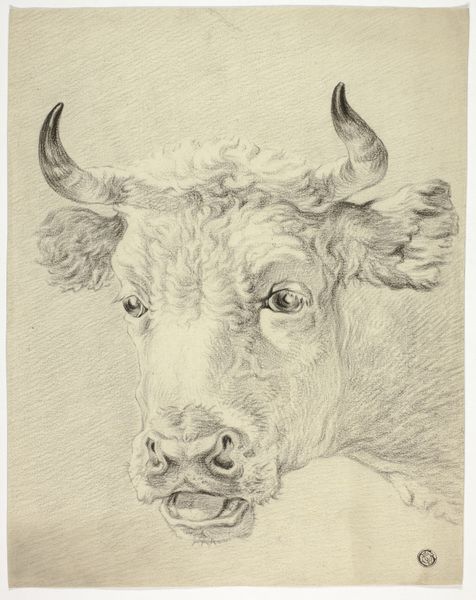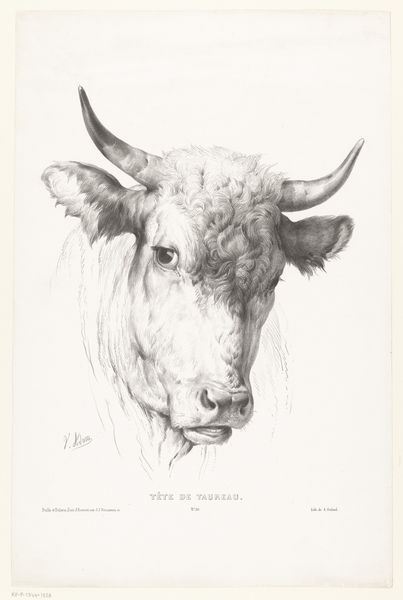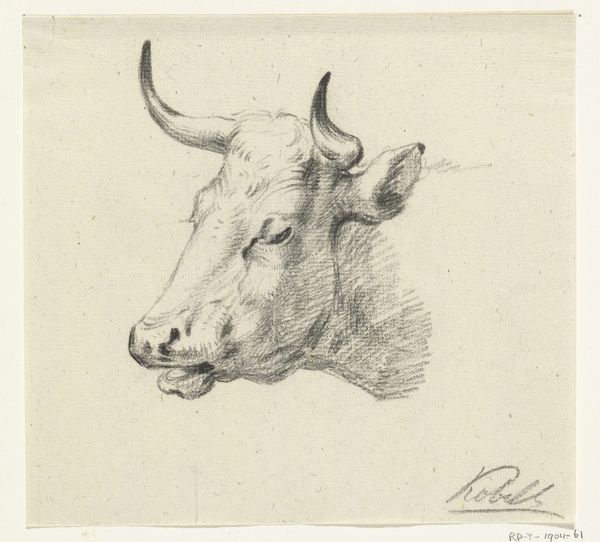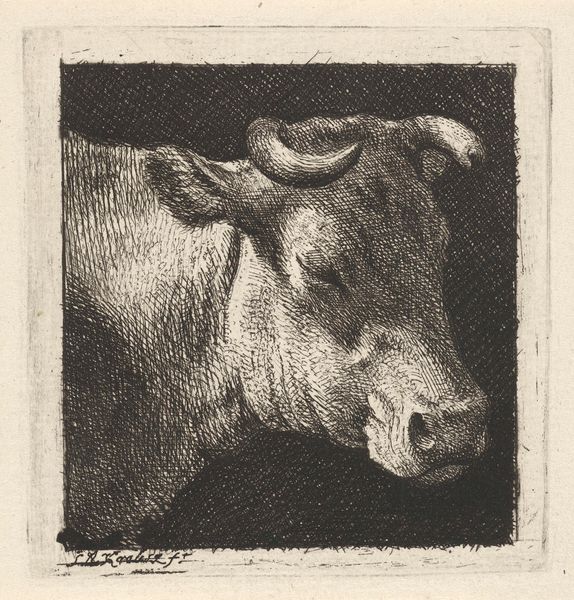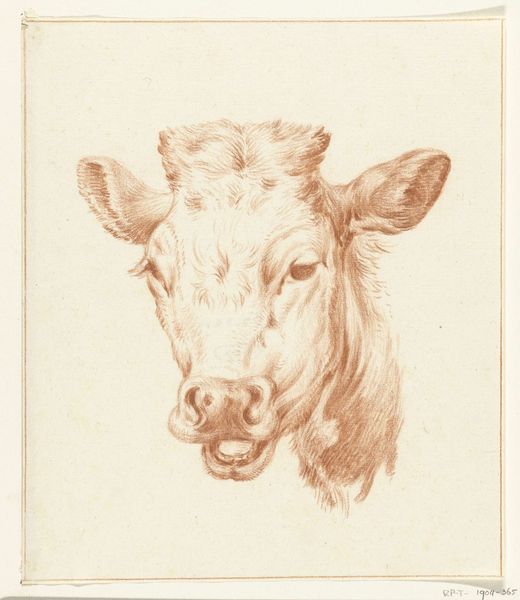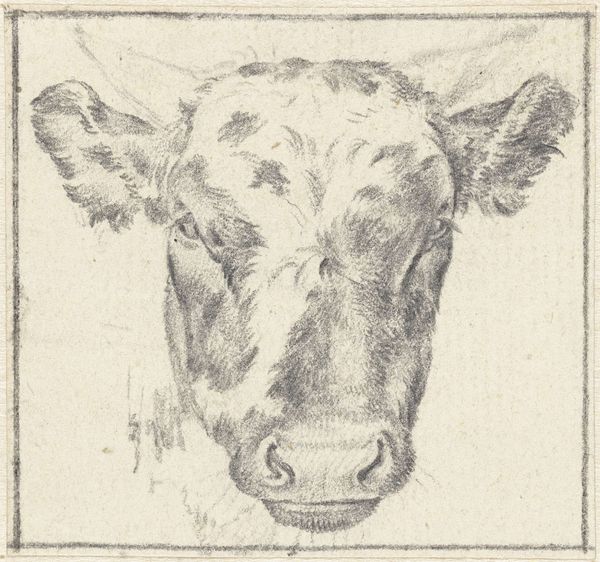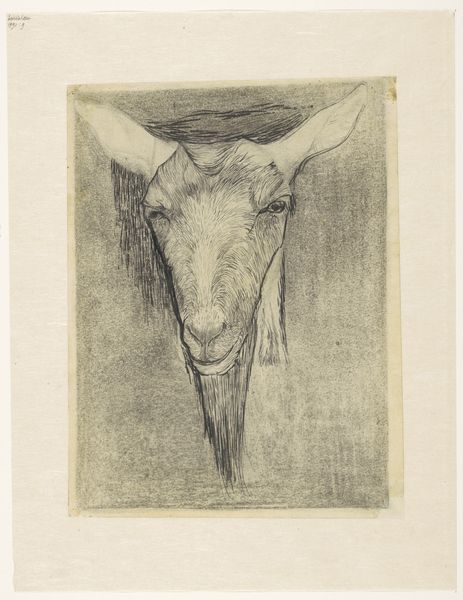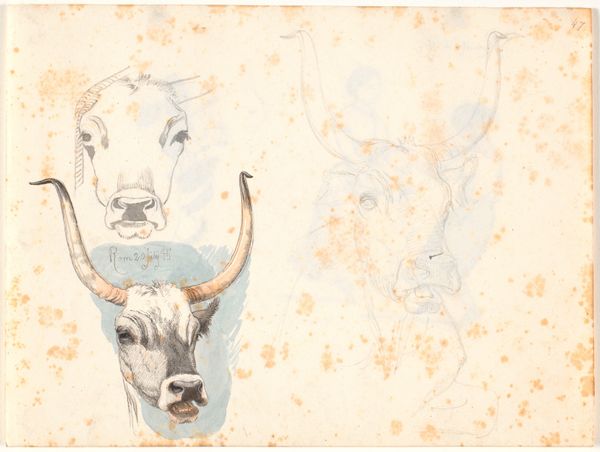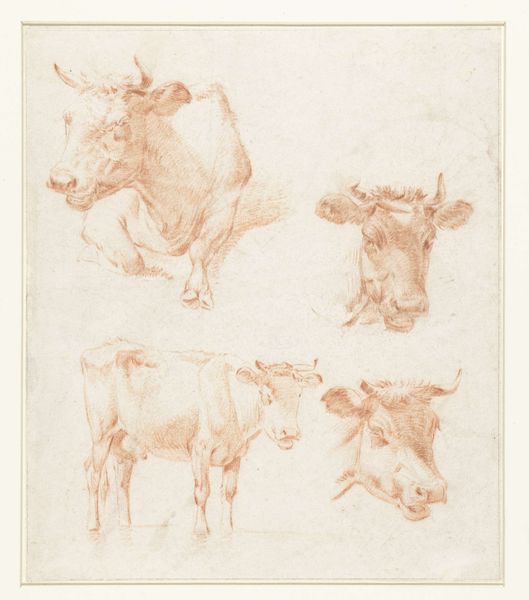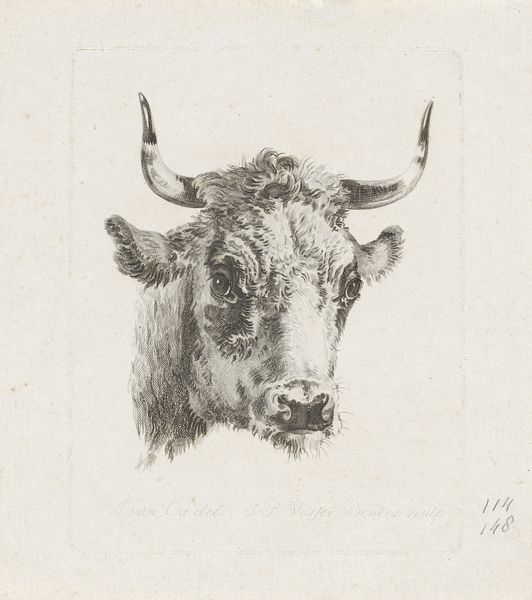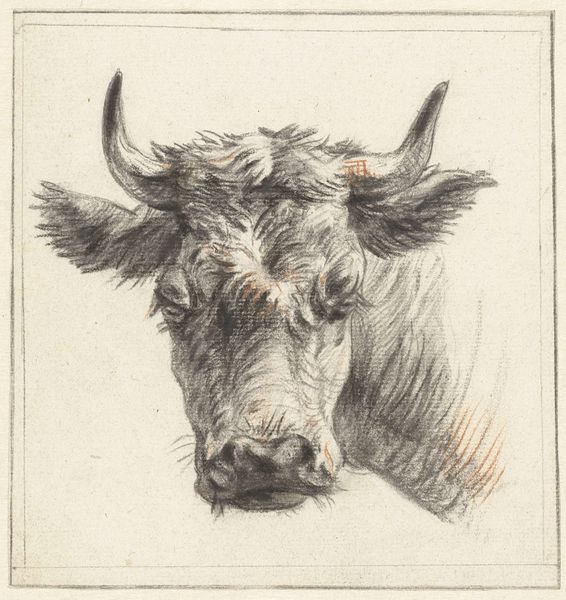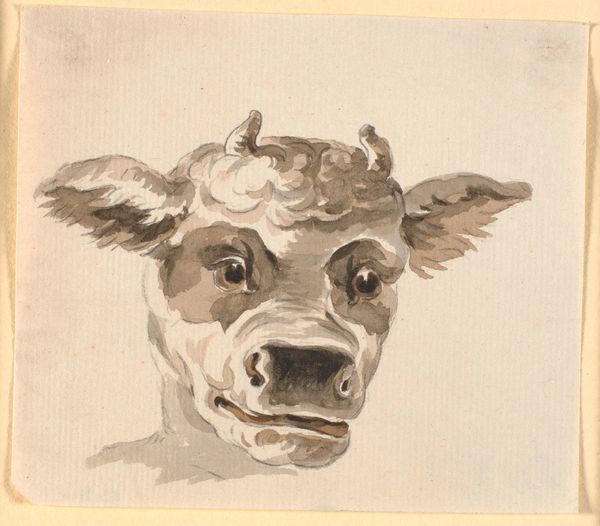
drawing, pencil
#
portrait
#
drawing
#
landscape
#
pencil
#
realism
Dimensions: height 173 mm, width 134 mm
Copyright: Rijks Museum: Open Domain
Curator: Here we have "Kop van een Zebu, van voren"—Head of a Zebu, from the Front—created sometime between 1866 and 1939 by Bernard Willem Wierink, housed here at the Rijksmuseum. It's a striking portrait. Editor: My initial reaction is to the texture; I can practically feel the rough paper and the softness of the pencil. There's an interesting contrast happening in the way the artist is using pencil strokes for light and shadow to shape form. Curator: Absolutely. The Zebu, a type of humped cattle common in South Asia and East Africa, would have been relatively exotic to European audiences. Wierink might have encountered these animals in zoological gardens or even in colonial exhibitions, becoming a subject of fascination. Editor: That colonial link is crucial. Think about the labor involved in raising these animals and the economic structures connected to them. The drawing’s realism brings to mind agricultural displays—a way to exhibit resources of colonized lands. Curator: Indeed. Consider, too, the genre of animal portraits itself. They were often commissioned by wealthy landowners to document prize livestock. It subtly elevates the animal while reinforcing the patron's status. But in Wierink’s case, with his precise pencil strokes, is he elevating or dissecting? Editor: It’s both! It’s careful observation, like a scientific illustration but also feels like this creature's dignity is intact. The material modesty—pencil on paper—contradicts that sense of high society. What does it mean to enshrine a working animal in the language of fine art? Curator: That's precisely the question the piece forces us to ask! By displaying it in the halls of the Rijksmuseum, we acknowledge not just the animal itself but all the interconnected histories that its image carries. Editor: Right. We are also implicitly acknowledging how our access to the animal in a museum shifts the historical relationship of humans to other animals through processes like industrialization and meat production. That all began to transform dramatically in Wierink's lifetime. Curator: A thought-provoking intersection of artistic technique, colonial history, and animal studies captured in a seemingly simple drawing. Editor: A humble medium exposing layers of material and cultural significance.
Comments
No comments
Be the first to comment and join the conversation on the ultimate creative platform.
